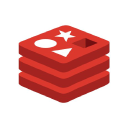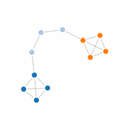Top graph-tool Alternative Solutions for Graph Analysis
Graph-tool is a highly efficient Python module designed for the manipulation and statistical analysis of graphs, also known as networks. Its core strength lies in its C++ implementation, leveraging template metaprogramming and the Boost Graph Library for performance comparable to pure C/C++ libraries. However, specific project requirements, preferred ecosystems, or feature sets might lead you to seek a robust graph-tool alternative. This article explores some of the best tools available that offer similar or complementary functionalities for your graph-related tasks.
Top graph-tool Alternatives
Whether you're looking for a database-centric solution, a pure Python environment, or something in between, these alternatives provide powerful capabilities for working with graphs.

neo4j
Neo4j stands out as a high-performance graph engine, combining the features of a mature and robust database with an intuitive, object-oriented approach for developers. It's an excellent graph-tool alternative for those needing a persistent, ACID-compliant graph database. Neo4j is Free and Open Source, supporting Mac, Windows, and Linux, and its primary feature is its powerful Graph database capabilities.

RedisGraph
RedisGraph is a property graph database module built for Redis, offering a unique approach by utilizing linear algebra on sparse adjacency matrices for graph implementation. This makes it a compelling graph-tool alternative for those already familiar with Redis or seeking a high-speed, in-memory graph solution. It is Free and Open Source, available on Mac and Linux, and excels in Database and Graph database functionalities.

NetworkX
NetworkX is a widely used Python language software package specifically designed for the creation, manipulation, and study of complex networks. If you're looking for a pure Python graph-tool alternative that integrates seamlessly into your existing Python workflows, NetworkX is an excellent choice. It is Free and Open Source, runs on Windows, Linux, and Python environments, and offers strong features for Drawing, Graphs, and general Python-based graph analysis.
Choosing the best graph-tool alternative depends heavily on your specific project needs, whether it's the need for persistent storage, integration with existing databases, or a pure Python environment for academic or research purposes. Explore these options to find the perfect fit for your graph analysis and manipulation tasks.